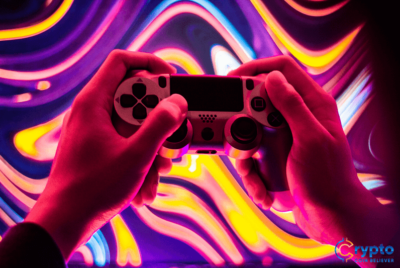The financial market is a dynamic environment that goes through ups and downs in cycles. The…
Layered Architecture of Blockchain Technology: Blockchain Layers Explained

Learning about blockchain layers is important in understanding how the whole mechanism of blockchain technology works.
Blockchain technology is the foundation on which cryptocurrency and decentralized finance rest. Peer-to-peer (P2P) transactions occur because the blockchain ensures anonymity and transparency.
Beyond its role in facilitating cryptocurrency transactions, there is more to blockchain architecture. It contains five layers that enable a number of transactions, ranging from hundreds to thousands, 24/7.
So, these are the five blockchain layers that make up the blockchain. We will explain them in the simplest way possible.
How Many Blockchain Layers Are There?
There are 5 blockchain layers for its layered architecture. These layers are the hardware layer, data layer, network layer, consensus layer, and application layer. Then, there is another set of layers for its protocols.

Image from encyclopedia.pub
Hardware Layer
This layer contains the connected computers (also known as nodes), network connections, and numerous data servers. Data servers keep blockchain data secure. It is from the data server that Web users request information when browsing blockchain-based applications.
Additionally, the hardware layer facilitates peer-to-peer network sharing. Data exchange is faster and easier because there is a large network of linked devices where information continually flows to and from.
Data Layer
In contrast to the hardware layer that focuses on computers and networks, the data layer is where all the information is kept and managed. A data layer is described as a linkage of blocks, each containing private information inside. The connected blocks also hold all transactions taking place in the blockchain networks.
Network Layer
Also called as P2P layer or propagation layer, this is where communication occurs. The network layer is in charge of maintaining the nodes’ interconnectivity. When the nodes’ connections are stable, they will continue to synchronize and distribute data in a secure manner.
The intercommunication of these nodes is highly crucial in the blockchain network because they are responsible for reaching a consensus about a transaction’s authenticity.
Inter-node communication should be quick so that it can validate many transactions in a matter of seconds. This is the role that the network layer plays.
Consensus Layer
This is the most crucial of the five layers. The consensus layer is responsible for validating all the transactions in a blockchain. Without this layer, decentralization and peer-to-peer are impossible.
It executes the blockchain protocol. It gives the nodes their orders to check and authenticate transactions. Moreover, it oversees that decentralization is uniformly effective throughout the network.
Application layer
Decentralized applications (Dapps), application programming interfaces (APIs), and smart contracts belong in this layer. The application layer also includes the programs that crypto enthusiasts utilize to create communication in the blockchain. The programs or application programming interfaces (APIs) act as the front-end while the blockchain technology is the back-end.
The application layer structure has two sub-layers: application and execution. The programs that users interact with make up the application sub-layer. Then, we have the execution sub-layer that consists of the chaincode, underlying rules, and smart contracts.
These are the blockchain layers that work together to make the blockchain a safe space for monetary transactions and technological innovations.
Blockchain Protocols: Another Set of Blockchain Layers
The first part of our discussion centered around the blockchain infrastructure layers. Next, we have the blockchain protocols and we have 4 layers for this part.
Layer 0
This is the foundation where all the other layers are established. It is also in layer 0 that the hardware (laptops, phones, and other devices) and the Internet interact with each other. The interoperation of these components makes the blockchain a reality.
Oftentimes, layer 0 uses a native token to allow users’ participation. Some crypto companies with Layer 0 blockchains are Cardano, Polkadot, and Avalanche.
Layer 1
The bulk of the workload falls on Layer 1. It performs the major operations of the network such as maintenance, protocols, consensus mechanism, and others. In a way, Layer 1 can be thought of as the actual blockchain. However, because of the heavy tasks assigned to it, Layer 1 often encounters scalability problems. When more people start using a blockchain, a bigger computational power is required to authenticate transactions and new blocks for record-keeping.
For this reason, companies such as Ethereum and Solana that Proof of Stake instead of Proof of Work, rely on sharding. It is a process that divides computing tasks into smaller parts.
Layer 2
Layer 2 works on top of the Layer 1 as a support mechanism. It helps Layer 1 perform the increasing number of transactions. Layer 2 also resolves problems that arise in the first layer. For the most part, these are third-party systems that aim to enhance the throughput of Layer 1.
Layer 3
Finally, Layer 3 is the part of the Blockchain that the public sees and interacts with. In consonance with Layer 1 and Layer 2, it works to make the user’s interface simple and easy to navigate.
Summary of Blockchain Layers

The blockchain technology is revolutionary and it is what helps the cryptocurrency maintain its decentralization. In our previous post about Blockchain technology, we explained about its history and purpose.
Blockchain can help change and improve a lot of aspects of the financial sector. As long as this kind of technology is not abused, it will greatly benefit a lot of people.




This Post Has 0 Comments